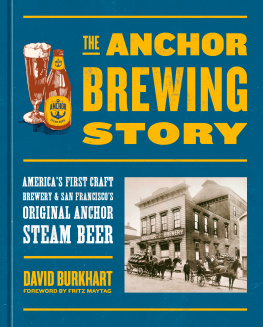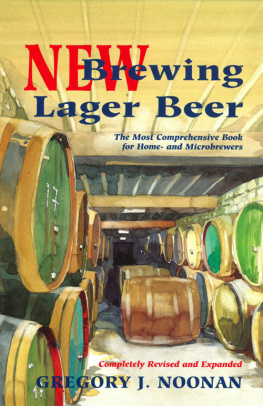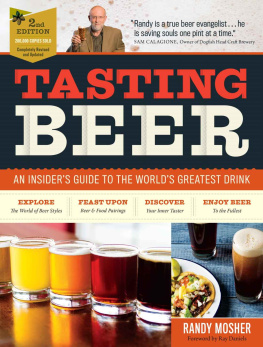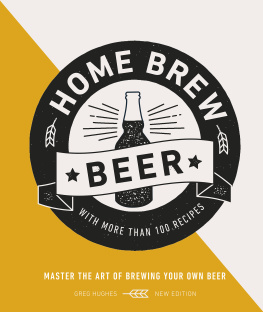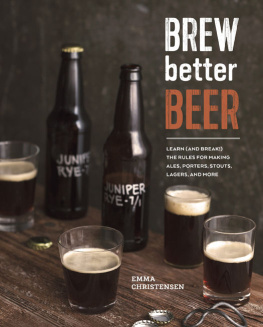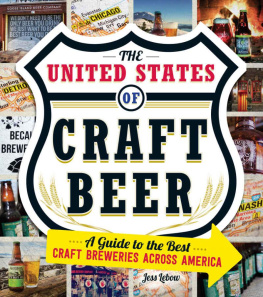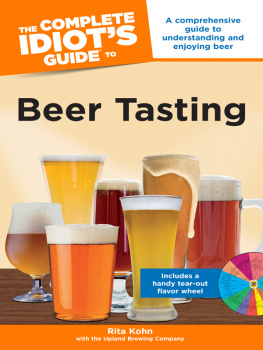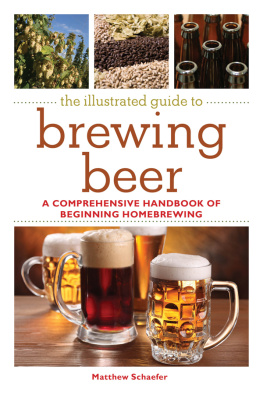
2017 Quarto Publishing Group USA Inc.
Text 2017 Dave Carpenter
Photography Luke Trautwein, unless otherwise specified
First published in 2017 by Voyageur Press, an imprint of The Quarto Group, 401 Second Avenue
North, Suite 310, Minneapolis, MN 55401 USA. T: (612) 344-8100 F: (612) 344-8692
QuartoKnows.com
All rights reserved. No part of this book may be reproduced in any form without written permission of the copyright owners. All images in this book have been reproduced with the knowledge and prior consent of the artists concerned, and no responsibility is accepted by producer, publisher, or printer for any infringement of copyright or otherwise, arising from the contents of this publication. Every effort has been made to ensure that credits accurately comply with information supplied. We apologize for any inaccuracies that may have occurred and will resolve inaccurate or missing information in a subsequent reprinting of the book.
Voyageur Press titles are also available at discount for retail, wholesale, promotional, and bulk purchase. For details, contact the Special Sales Manager by email at or by mail at The Quarto Group, Attn: Special Sales Manager, 401 Second Avenue North, Suite 310, Minneapolis, MN 55401 USA.
Digital edition: 978-0-76035-962-4
Hardcover edition: 978-0-76035-215-1
Library of Congress Cataloging-in-Publication Data
Names: Carpenter, Dave, 1978- author.
Title: Lager : the definitive guide to tasting and brewing the worlds most popular beer styles / Dave Carpenter.
Description: Minneapolis, MN : Voyageur Press, 2017. | Includes bibliographical references and index.
Identifiers: LCCN 2017013886 | ISBN 9780760352151 (hardback)
Subjects: LCSH: Lager beer. | BISAC: COOKING / Beverages / Beer. | COOKING / Beverages / General.
Classification: LCC TP577 .C34 2017 | DDC 641.2/3--dc23
LC record available at https://lccn.loc.gov/2017013886
Acquiring Editor: Thom OHearn
Project Manager: Alyssa Bluhm
Art Director: James Kegley
Cover Designer: Sussner Design
Layout: Amy Sly
FOREWORD
BY PETER BOUCKAERT
PARTNER, PURPOSE BREWING AND CELLARS
In 1996, I made the move from Belgium to New Belgium. The brewery had just moved to its current location in Fort Collins, Colorado. It had a very nice German brewhouse and bottling line. At the time, New Belgium was making five beers year-round using just two yeasts. Nowadays, that may sound strange: What American craft brewery would only make five beers? But it was not unusual then. In fact, two yeast strains meant we had one more than most breweries!
In 1997, we started our seasonal program of beers. While we initially intended to make a kettle sourunheard of at that time!we ended up making a pilsner for our first release. I had been brewing for over a decade in Belgium and the United States, yet I had never made a lager before the beer we called Blue Paddle Pilsner.
Despite the high-quality brewhouse, the brewery was absolutely not set up to make lagers. The temperature in Fort Collins could be high in the late summer and fall, yet we could only cool the wort with city water straight from the tap. Clearly, I had to work around our system and modify the recipe to get the best results. (As brewers know, you must use the tools you have!) On top of that, pilsners are hard to brew: They are beers where you have to make the malt, hops, and yeast shine and showcase your technical precision. In the end, I pulled it off. I loved it when German visitors tasted Blue Paddle Pilsner and said I should enter it in a German brewing competition. In my opinion, it was not fit for the Substitutionsverbot, as it used to be calledbut, hey, I am not a German.
If you step back, lagers are a blip in history. Just as dinosaurs roamed the earth for tens of millions of years, and humans have existed only for a million, so are lagers within the timeline of fermented beverages. This, of course, comes down to the yeasts used to brew lagers and our ability to control them. Lagers are beers fermented with a different family of yeasts than ales. (Scientifically, the name has changed three times since I have been in brewing, and will probably change again, but the fact remains that lager yeast is different from ale yeast.)
The main difference for brewers is that lager yeast can and should ferment at colder temperatures than ale yeast. This means that breweries in different parts of the world found success with various strategies to keep fermentation temperature under control. There were cliff-hugging breweries with cold cellars built into rock, as the in the Hofmhl brewery in Eichsttt. River ice collection was key at August Schell brewery in New Ulm, Minnesota. Underground tunnels were used by Pilsner Urquell, and can still be seen today. Scientific discoveries (by Louis Pasteur and others) and man-made cooling devices only spurred lager yeasts on, and they eventually conquered the world.
Yet, the past few decades and the rising popularity of craft beer have not been kind to the perception of lager. There are many misconceptions these days. For example, a pale, flavorless beer is what comes to mind for most people when lagers are mentioned. As you will see in this book, however, this is not an accurate representation of lagers today or throughout history. (In , you will see many other types of lager!) Or, for a modern example, look no further than New Belgiums own La Folie, an oak foeder aged sour brown. Would you believe this beer begins its life fermented with a lager yeast?
While using a lager as the base beer for a wood-aged sour is a fun idea, it also showcases something important: Yeast is a tool in the toolbox of a brewer and a brewer can use multiple tools. Beer is art and the brewer is the artist. We create something beautiful and someone else will put it in a box or style. I encourage you to keep your mind open to this idea as you explore the chapters in this wonderful and engaging book. Lager is likely much more than you imagined.
Vienna lager is just one of many classic lager styles that craft brewers are rediscovering and, in some cases, reinventing.
INTRODUCTION
Beer has come a long way in the last four decades.
Craft brands have exploded as flavor-conscious consumers have rediscovered what it means for beer to delight the senses. Modern brewers have reacquainted us with pale ale, stout, hefeweizen, bire de garde, tripel, and countless other styles. They have introduced us to wild and sour beers that tickle the palate with acidity and funk. And they have developed entirely new kinds of beer, a great number of which have found a home in the ever-expanding family of India pale ales.
Craft beers ascendency has largely been built on the success of ale, a generic designation for beer fermented at or near room temperature. But for most people, the word beer still means one thing: lager. In just about every city in every nation, ordering a beer without further qualification is very likely to get you a lager, an umbrella term for a family of beers that trace their lineage to medieval Bavaria.


